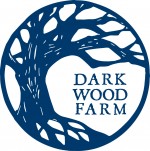It’s October. I just stopped at a restaurant with a chalkboard menu adorned with fake cobwebs and spiders. Folks are taking cornstalks from the field and bundling them up on their porches to adorn their doorways. Everywhere I look there are big orange pumpkins waiting to be carved into jack-o-lanterns. When I was a kid, I loved carving pumpkins as much as anyone, but now that I’m a farmer, sometimes I look at those huge pumpkins and wonder, “Is bigger really better?” I’m not trying to be the grinch that stole Halloween, but I think about growing vegetables ALL THE TIME, and because jack-o-lanterns are vegetables, I contemplate the cost of growing these huge veggies. I’m not talking the dollars and cents it takes to grow mammoth-sized pumpkins, I’m talking about the cost to the fertility of the garden.
Pumpkins are squash, and they belong to the family Cucurbitaceae along with cucumbers, melons, gourds, and zucchini. All of the cucurbits require a lot of room to grow because they have sprawling vines, and they are heavy feeders, meaning they require soil that is rich in many nutrients. You can think of them as plants with big appetites. Oftentimes, fertilizers, either synthetic or organic, are used to provide extra nutrients for pumpkins and their squash relatives. Most fertilizers include the three big plant nutrients: nitrogen, phosphorus, and potassium. Nitrogen, in particular, promotes rapid growth of plants, which is why plants grow so quickly after the application of nitrogen-heavy fertilizers. Along with big appetites, pumpkins get thirsty, and to grow a prize-winning big pumpkin, you need a lot of water. One source I found quoted 89-134 gallons per day for a 1000 square foot garden. This is especially important if the pumpkin is growing rapidly because of the addition of extra plant nutrients, like nitrogen. So what do all these fertilizers and gallons of water give us? Well, besides an awesomely huge pumpkin to look at, a watery pumpkin. Pumpkins are 85-90% water, so a medium-sized jack-o-lantern pumpkin at 18 lbs is around 15-16 lbs of water and 2-3 pounds of fiber and nutrients. Pumpkins are a good source of beta-carotene, they have a lot of fiber, the seeds are high in zinc, which is great for your immune system, and they contain a lot of vitamins and trace minerals. If you eat your pumpkin, you absorb many of those nutrients in your body, and a short time later, the fiber and metabolites go elsewhere (that’s the polite way of saying that they go down the toilet). If you don’t eat your pumpkin, the nutrients end up in a rotten puddle on your front porch, or maybe splattered on your sidewalk if there are marauding teenagers in your neighborhood. I would almost guarantee, though, that the nutrients don’t go back to the field where the pumpkin grew. Instead, there is now a nutrient “hole” in the garden, leaving fewer nutrients behind where the pumpkin was heavily feeding on water and soil nutrients all season long.
Before you get depressed and swear off jack-o-lanterns forever, there are some ways to grow pumpkins and keep your garden healthy instead of depleting it of nutrients. First, or last depending on how you look at it, instead of letting a jack-o-lantern go to waste at the end of the year, try composting it. A home composting system is easy to set up (you can check out my home composting system in my “After the Market” blog) and allows you to cycle the nutrients from your leftover vegetable waste back into your garden. Simply take finished compost from your pile and put it in the garden where your pumpkin was growing. Adding a nitrogen-fixing cover crop like clover, vetch, or field peas to your pumpkin patch can also help put nitrogen back in your garden by converting nitrogen from the air into nitrogen in the soil that plants can easily access. These nitrogen-fixing cover crops do this trough a symbiotic bacteria present on their roots. Amazing, right?! You can get free nitrogen for your plants from the air!
In my garden, I didn’t add extra nitrogen-rich fertilizers to my pumpkins and I didn’t irrigate them. I did give the baby pumpkin plants a little bit of compost, which helped to replace some of the nutrients removed by the previous crop taken from the garden. Otherwise, the air, sun, and rain provided everything else the pumpkins needed. Without excess nitrogen, they didn’t grow rapidly, and they didn’t put on excessive water weight as a result. Admittedly, I wasn’t trying to grow prize-winning huge pumpkins. I wasn’t even trying to grow jack-o-lanterns. Instead, I grew pie pumpkins, which are for eating even though they look pretty enough to be decorative. Pie pumpkins are smaller than jack-o-lanterns, and this year, my pie pumpkins averaged around 4 lbs each, which provides enough pumpkin flesh to make 1-2 pies. I didn’t want huge pumpkins because I didn’t have a lot of room for them in my 1-acre garden and I wanted the flavors and nutrients to be concentrated, not watered down. In my mind, it’s the best of both worlds – a vegetable that is delicious and healthy, albeit small.
If you come visit my stand at the farmers market, you may notice that some of my veggies are on the petite side. That’s because I use my “little pumpkin” philosophy all throughout the garden. My celery is small. So are my eggplants, beets, cabbages, and a bunch of other vegetables. Sometimes it’s because I grow small varieties and plant things close together so I can fit a lot of vegetables in a small space, but oftentimes it’s because I don’t use fertilizer and extra water on the plants. I believe the result is nutrient-dense and flavorful (and not watery) food. Sometimes bigger isn’t always better…sometimes good things come in small packages.



